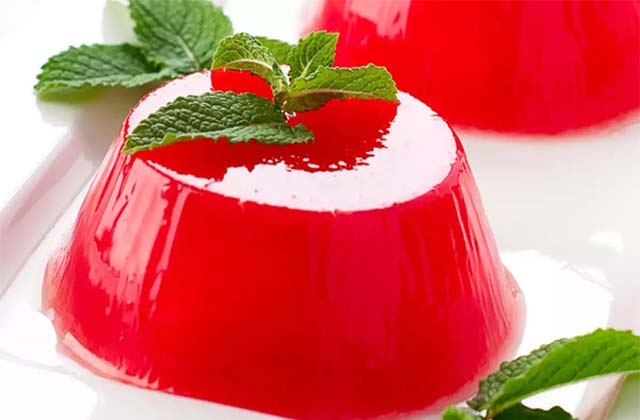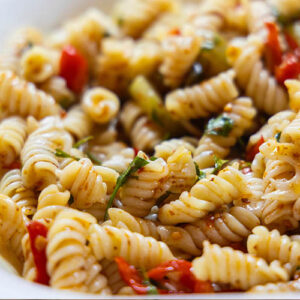Does jelly need to be refrigerated? If you keep a jar of jelly in the kitchen just in case someone at the breakfast table asks for some, you might want to find out more about how to store jelly.
Does jelly need to be refrigerated? The best way to preserve jelly is probably in the refrigerator, especially if it is a low-sugar or sugar-free variety. A jar of jelly that has not been opened does not need to be refrigerated. High-sugar jellies can be kept at room temperature in a tightly closed jar and a dark, cool location.
For more information on when to store jelly in the refrigerator versus a kitchen cabinet, continue reading.
Table of Contents
Does Jelly Need to Be Refrigerated?
No, if the jelly is still in cube form and hasn’t been opened, you don’t need to worry about making it; you can leave it on the pantry shelf for a while. At this point, there’s no need to store it in the fridge. Although it is optional, you are welcome to, Jelly should be kept in the refrigerator, though, if it is made without sugar or with very little sugar. Because it has nothing to maintain its moisture level, jelly with little to no sugar will quickly go bad.
If you’re trying to decide how to store your jelly, keep in mind that refrigerating it will typically increase its shelf life. Therefore, it is better to store those jelly jars in the refrigerator for long-term preservation if you don’t eat jelly every other day of the week and you feel it wouldn’t hurt to do so.
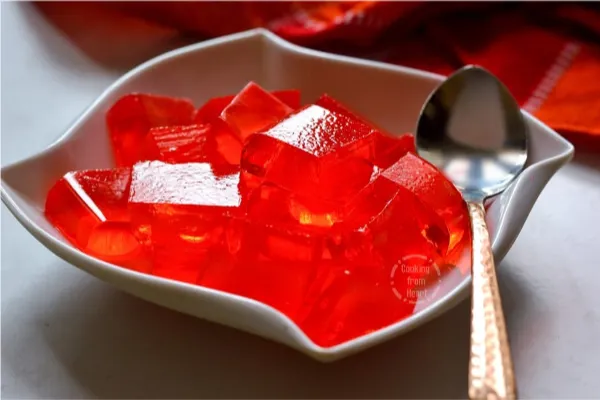
How Long Does Jelly Last Unrefrigerated?
An unopened jar of jelly stored in a cool and dry area can last up to 12 months stored in the pantry. Jelly’s sugar content, particularly after it has been opened, affects how long it will last on the shelf.
If you want to keep jelly out of the fridge but make it maintain its best qualities for as long as possible, follow a few simple safety tips:
- Food shouldn’t be dipped into the jelly.Put the required quantity of jelly into a different bowl before continuing if you’re using it as a dip on a cheese platter, for instance.
- For jelly, always use clean cutlery.The jelly may become contaminated with bacteria as a result of other food particles getting inside of it.
- Always keep the lid closed.The numerous insects that will enjoy the sweet preserve as a treat won’t have a chance to dry out and enjoy the jelly.
- Refrain from placing the jelly in the sun.Jelly will change in flavor and color as a result of the latter. Even if it is in dark-colored jars, the jelly needs to be stored in a dark area to be protected.
How Long Can You Keep Jelly Out of the Fridge?
An unopened jar of jelly can last up to 12 months if kept cool and dry outside of the refrigerator. Jelly, on the other hand, has a shelf life that varies depending on its sugar content, especially after it has been opened. However, it is generally acknowledged by authorities that if handled correctly, an unrefrigerated jelly should last at least 30 days after it has been opened.
Does Smucker’s Jelly Need to Be Refrigerated?
No, Smucker’s jelly doesn’t need to be chilled; it can be kept in a shelf or cabinet as long as it hasn’t been opened. Under normal circumstances, Smucker’s jelly that hasn’t been opened should be of acceptable quality until it expires. A refrigerator is advised for opened Smucker’s jelly for longer-term preservation, which could be up to 9 months, as the flavor and color of products will deteriorate over time.
Do You Put Jelly in the Fridge Or Freezer?
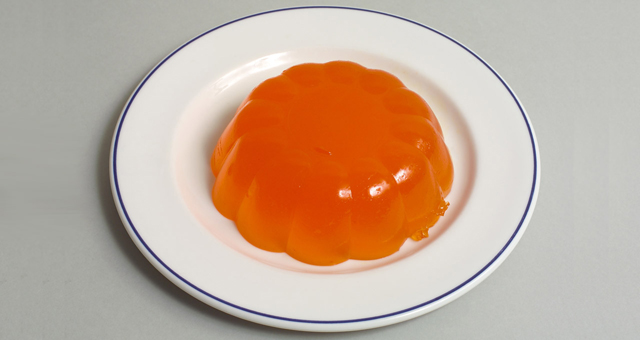
Depending on how quickly you need to consume your jelly, you can use either. You can store your jelly in the refrigerator and eat it whenever you want if you plan to consume it within one to three weeks. However, if you have long-term plans, you should keep it in the freezer because frozen jelly can last for up to a year. It’s better to thaw it as frequently as you can before eating it because it can lose flavor after being frozen for up to a year.
How Long Does Homemade Jelly Last?
Due to the absence of preservatives, almost everything homemade has a shorter shelf life than its store-bought counterpart.
The good thing about jelly, though, is that it contains sugar. Leaving homemade jelly outside is safer.
The shelf life of homemade jelly is 6 to 12 months in the fridge. If you prefer to leave your jelly out at room temperature, expect it to keep well for up to 4 weeks.
Note that these estimations are only true if you store jelly properly, i.e. in a well-sealed jar, away from heat, sunlight, and moisture.
Signs That Jelly Has Gone Bad
If you don’t like breakfast sandwiches with jelly, it’s most likely because you left it in the fridge for too long.
To detect whether the jelly is still good or not, look for the following signs:
- Mold – Jelly doesn’t grow mold unless you really work for it. However, if you haven’t been storing it properly or if you’ve been double-dipping, this is still possible.
- If you find any signs of mold in the jelly jar or the jelly itself, throw it away right away. Never even attempt to remove the moldy portion with a spoon. A soft substance, jelly is. If there is mold, it has probably seeped into the entire jar.
- Discoloration– Changes in color do not necessarily indicate serious spoilage. If jelly has been sitting in the refrigerator for a few months after being opened, its color may gradually change.
- The top layer of jelly typically darkens when exposed to oxygen. You can remove the “bad” portion in these circumstances and eat the remaining food.
- Don’t hesitate to throw away the jelly if there is significant discoloration or if the color changes are present along with other spoilage indicators.
- Off-Odor – Bad jelly frequently has an unpleasant odor. Jelly typically smells like something fermented when it is spoiled.
- Consistency Changes – It’s time to open a new jar of jelly if you notice jelly that has significantly changed consistency.
- People mistakenly believe that the liquid that gathers on top of the jelly is a sign of spoilage. But this is normalif you have had the jelly for some time. To restore the original texture, simply stir the mixture.
What Happens If You Eat Bad Jelly?
You can take comfort in knowing that the date on the jar is merely an estimate of how long the jelly will retain its best qualities if by “bad jelly” you mean expired jelly. It probably won’t be truly “bad” just yet.
If the jelly is truly spoiled, there is little chance that you would eat it because it smells and looks so awful that you wouldn’t miss it.
Practice food safety in any case. Before consuming the jelly, carefully examine it, especially if you’ve had it for a while.
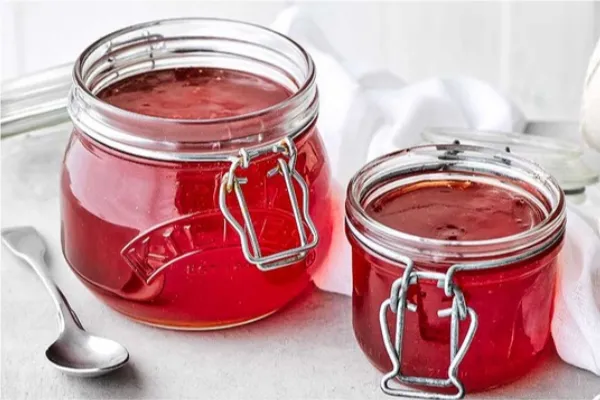
Different Jelly Ingredients and Shelf Life
Some basic ingredients, including fruit juice, pectin, acid, and sugar, are used to make jelly. You are free to use any fruit you like, including grapes, cranberries, and raspberries. The shelf life of jelly may be impacted by the fruit you use to make it. They thicken when combined in cooking to create a mildly sweet and tart substance with a spreadable texture.
Pectin is added to the mixture after the fruit’s core and peel have been removed to create consistency. Fruits contain pectin, a natural fiber that aids in the gelling of fruit juices. When the fruit is tarter, there is more pectin present.
Jellies are frequently made from fruits like apples, grapes, crabapples, berries, strawberries, and cranberries. Jelly’s shelf life is influenced by its ingredients and storage environment. The fruit you use, for instance, to make jelly extends its shelf life. It will also likely last longer if you store it somewhere cool and dry.
Here’s a detailed overview of different jelly ingredients and shelf life:
Fruit
Better jelly is made with fruit as its main component. To make jellies, always choose fruit with a high pectin, high acid content, and better quality, such as blackberries, tart apples, currants, crabapples, concord grapes, cranberries, currants, and gooseberries.
They become more smooth jelly-like as their pectin content increases. Fruit’s shelf life also depends on the type. For example, when properly stored at room temperature, an unopened jar of apple jelly keeps its best quality for about two years.
To make jelly, use the exact amount of fruit; do not use more or less. The harmony of all the ingredients is maintained. If your schedule prevents you from using fresh fruit to prepare your preferred fruit dessert, you can freeze the fruit juice and prepare it another day. The fruit juice serves as the jelly’s water source, and my supply is made up primarily or entirely of pectin or acid.
Sugar
Using pectin, fruit acids, and sugar, sugar contributes to the gel texture. A 55% by weight concentration adds to the flavor while also acting as a natural preservative. It also serves to increase the amount of fruit juice, set and sweeten the jelly, stop mold and bacterial growth, and set the jelly.
For the desired consistency, it’s crucial to use the exact amount of sugar, though. Too much sugar can make jelly stiff. It won’t set if you use less sugar. Use the recipe that was created specifically to achieve your desired taste if, for example, you prefer jelly that contains less sugar.
Jelly’s shelf life is impacted by using less sugar when making it. Beet sugar or cane sugar is typically used as the sugar ingredient in jam. Honey and corn syrup, two other sugar substitutes, typically cover up the fruit flavor.
Pectin:
Pectin is the key component in fruit jellies. Pectin is what gives jelly the jelling effect that you enjoy the most. Some fruits naturally contain more pectin than others, and in order to properly make jelly from some fruits, pectin must be added.
Fruits that are only partially ripe contain more pectin than fruits that are fully ripe. For this reason, some jelly recipes use fruits that are only partially ripe. Low pectin fruits like cherries, fresh strawberries, and blueberries need to be supplemented with liquid or powdered pectin.
Fresh lemon juice, which has a lot of pectin, can also be added. Fruits like highbush cranberries, apples, some plums, and crabapples have a high pectin content that contributes to the formation of a pectin gel.
Acid
Acid aids in fruit juice thickening. Making jelly calls for a pH of 3.5 or lower. A natural acid exists in some fruits. Supplements should be added to fruits that don’t have enough acidity.
In order to achieve the necessary level of acidity for gel formation, lemon juice is a natural source. You should be aware of the precise amount of acid used to make jelly, though. A surplus of acid will cause it to evaporate.
How to Maximize Jelly Shelf Life?
When kept unopened, preserves like jelly last longer. It typically retains its peak quality for a year or so. Since jellies are sold without refrigeration, you can keep them in a cool, dry area of your kitchen. Let’s say you want to extend their shelf life by keeping them in a refrigerator at 40°F or lower. For a longer shelf life, freeze any jelly you purchase at the store. After being frozen for a year, jellies retain their flavor and color.
Another option is to keep your homemade and store-bought jelly in a pantry or kitchen cupboard that is dark, cool, and dry. Another suggestion is to freeze the store-bought jelly to extend its shelf life.
A year in the freezer will cause jelly to lose some of its flavor, so keep that in mind. It must be kept between 50 and 70 degrees Fahrenheit. Making the most of fruit preserves that are approaching their expiration date is also beneficial.

